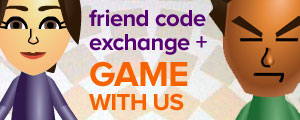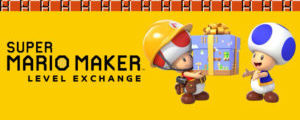Interesting lore and environmental storytelling; hoverboard mechanic is fun and unique
Some dungeons are a bit lacking in the puzzle department
Welcome to another Backlog Review, where we take a look at an older game that fans might have sitting waiting to be played or are still considering giving a purchase. This time we’re looking at Star Overdrive.
Early on in Star Overdrive, by Caracal Games, players find the main character Bios crash landed on an unknown planet known as Cebete. Through the story, players come to find out that their companion Nous had crashed on this planet too. Much of the story of the game revolves around piecing together what happened to Nous to get to this point.
In order to progress the main story, players will complete quests marked on the map that take them, often, to computers or tapes. The developers of the game have included voice lines or holograms of another protagonist in these computers and tapes that allow players to slowly reveal to themselves the mystery of what happened to their companion. By having these voice lines included, unveiling the story feels much more interesting than only including text dialogue.
While Star Overdrive has a lot of elements that harken back to games like Breath of the Wild in many respects, it has a lot that sets it apart in its world traversal. Players use hoverboards to navigate a dune dotted desert landscape. Jumping at the top of these dunes and executing complex tricks provides players with added boost, allowing them to move faster and catapult themselves farther.
At various locations across the world, domes with crafting stations are placed. Crafting stations allow players to create upgrades to hoverboard stats such as speed and mobility. In addition to traversal upgrades, there are combat upgrades for when players use the keytar as a weapon for things such as damage.
Puzzle based Breath of the Wild-like dungeons add new gameplay variety and teach players how to use new mechanics. Each new mechanic learned from a dungeon provides the player with a hot swappable combat ability or traversal ability that is completely unique from the others. For example, one mechanic allows players to use a telekinetic technology ability to move or throw an object or an enemy, which damages enemies.
As players explore the map, they will encounter towers that are used to reveal sections of the map. This will be familiar to those that have played newer Legend of Zelda games like Breath of the Wild and Tears of the Kingdom, or other games that have fog of war like systems. A unique aspect of these towers, not present in those games, is that the top of the tower functions as a slingshot, catapult, cannon that can send you flying to a far off region, or you can use it to boost yourself into a cool trick with your hoverboard.
Challenges placed across the map provide players with extra playable activities. One that stood out the most that made very good use of the dune filled desert landscape are timed checkpoint trials. Having these included on the map provides a nice respite from storyline missions, where players can just have some fun attempting to complete the trial as quickly as possible.
Across the map, enemies with varying difficulties and abilities are spawned. Enemies drop materials that can be used in crafting modifications for the hoverboard and keytar. By using more unique and harder to find materials, players can craft more powerful mods. Bosses drop unique mods for the hoverboard and keytar that are more powerful than many of the basic mods.
These bosses, placed at various points throughout the game’s main quest and world, provide unique gameplay challenges that are unlike any other enemy in the game. One of the bosses requires alternating between using abilities and staying close behind with your hoverboard, which breaks up some of the other gameplay. In many ways, bosses in Star Overdrive are reminiscent of certain bosses in newer Legend of Zelda games, like Breath of the Wild and Tears of the Kingdom, or games like Shadow of the Colossus.
It is plain to see that Caracal Games, an indie studio, took a lot of inspiration during the making of Star Overdrive from other action adventure games in the genre in many ways. However, it is the parts of this game that make it unique from those other titles that really show the developers had their own creative vision. The inclusion of a hoverboard traversal system that can be used in tandem with evolving action combat makes for an experience that is unlike anything else in the genre. Caracal Games took inspiration in certain features like puzzle dungeons, but did it in a way that does not feel like copy and paste, but fits perfectly with their own game.
Another aspect of Star Overdrive that feels particularly nice is that, at times, it feels like a cozy game. There can be moments when it feels amazing to just hoverboard around the open world, finding towers, completing challenges, doing tricks, and vibing to the soundtrack. It is a game that doesn’t feel like you have to be in a hurry to do anything. It doesn’t push you to play any other way than the way that you feel like playing. At times, you might want to just cruise around and do tricks. Other times, you may want to explore to find challenges. The game world is designed and spaced out in a way that it feels enjoyable to traverse and not at all a chore.
One area of this game that could be improved is the puzzle dungeons. Some of these dungeons feel well executed, but there are other that feel like they are lacking. For example, there was a dungeon centered around a mechanic that boosts you upwards. There were moments in this dungeon where it took a while to place what direction was the correct path forward. In addition, some puzzles felt too easy and the dungeons felt like they could have had more personality and beautification. Most of them looked the same and felt very empty compared to the dune filled open world that the rest of the game takes place in.
Overall, Star Overdrive is a game for the right moment. The game can be a blast to traverse with its hoverboard trick mechanics and can be extremely soothing if you want to explore, fight enemies, upgrade and customize your hoverboard and keytar, and solve the mystery of the story. At times, dungeons can feel quite empty and directionless, which does bring down the experience in those moments. However, considering that this is an indie game, this studio did a great job pulling off a game that captures many aspects of exploration and adventure of many of the greats before, while still executing a unique vision that feels like it has its own identity.
Nintendojo was provided a copy of this game for review by a third party, though that does not affect our recommendation. For every review, Nintendojo uses a standard criteria.




 ShareThis
ShareThis









